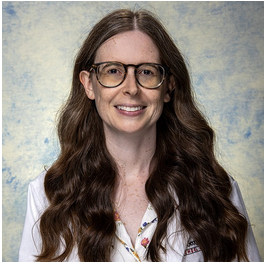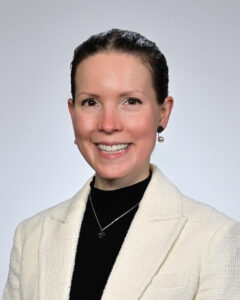By Bethany Fenton MS3, Meghan Etsey MS3, Ariela Marshall MD on behalf of AMWA Gender Equity Task Force
Gender bias in medical education can be defined as the unequal treatment of students based on their gender, often reflecting long-standing societal stereotypes about gender roles. In the context of medical school, these biases often appear in subtle yet significant ways—whether it is in the way women students are addressed in the classroom, the assumptions made about their clinical skills, or the tendency to overlook their contributions. One study found that women medical students were consistently rated lower than their male counterparts in terms of their clinical abilities, despite having comparable academic performance (Trix and Psenka, 2003). Additionally, research highlights that evaluations of medical students often differ significantly based on personality traits rather than solely on clinical or academic performance, indicating a reliance on subjective and biased criteria (Kurtzman, 2023). This reflects a trend where women are graded in an alternative sense even when they may exhibit equal, or even superior performance.
The effects of gender bias reach beyond academic challenges and can have a lasting psychological impact on women medical students. Women who encounter gendered assumptions about their abilities may internalize these biases, leading to a phenomenon known as “imposter syndrome.” This condition is characterized by a persistent fear of being exposed as a “fraud,” despite evident competence. A study found that approximately 24% of male and 49% of female medical students experienced impostor syndrome. This study also revealed significant associations between impostor syndrome and various components of burnout, including exhaustion, cynicism, emotional exhaustion, and depersonalization (Villwock et al., 2016).
A personal testimony from Sarah*, a third-year medical student, highlights the emotional toll of gender bias: “I often feel like I need to work twice as hard to prove that I belong here. In my first year during clinical rotations, I overheard a senior doctor question my knowledge in front of my peers, simply because I was a woman. Despite answering correctly, I couldn’t shake off the feeling that I wasn’t being taken seriously. It’s hard to feel confident when you constantly have to prove yourself.” Sarah’s experience is not unique, as many women medical students report feeling marginalized or underestimated, even when they perform well academically.
Gender bias also affects the way women students are trained. Studies have shown that women are less likely to be called on in class or offered hands-on opportunities in clinical settings. In a study by Derksen et al. (2016), male students were found to be more frequently assigned to high-profile, challenging cases, while women students were often relegated to tasks perceived as “easier” or “less important.” This results in fewer opportunities for skill development and leaves women with a sense of inadequacy.
The roots of gender bias in medical education are deeply embedded in societal norms and stereotypes. Historically, medicine was viewed as a male-dominated profession, with women relegated to roles like nursing or administrative support. This socialization has carried over into the current medical education system, where both men and women students are often unconsciously influenced by gendered expectations. For example, women are often expected to display more nurturing qualities, while men are encouraged to demonstrate assertiveness and leadership. These expectations not only affect the way women students are perceived but also the way they see themselves within the medical profession.
Dr. Helen F. Sullivan, a professor of medicine at Stanford University, encapsulated the importance of addressing gender bias when she said: “In order to fully realize the potential of our healthcare system, we must ensure that all doctors, regardless of gender, are given the opportunity to excel and lead. Gender bias has no place in the training of future physicians.” Dr. Sullivan’s words remind us that addressing gender bias is not only a matter of fairness but of ensuring the highest standards of care and leadership in medicine.
While the challenges faced by women are significant, there is hope for change. Several strategies have been proposed to address gender bias in medical education. These include:
- Bias Training for Faculty and Students: Medical schools must implement mandatory workshops and training to help both students and faculty recognize and address unconscious biases. Students should be aware at the beginning of training that bias exists and they should speak out about it if they experience or see others experience it. Students must be provided a safe space to speak out, without fear of retaliation. This can create a more equitable environment where all students, regardless of gender, feel valued.
- Mentorship Programs: Establishing mentorship programs that pair women students with experienced women physicians can provide crucial support. Mentors can offer valuable guidance and reassurance, helping students navigate the challenges of medical school and the medical profession. This can create a setting where students feel more empowered to speak up if/when they experience this as well.
- Encouraging Women in Leadership: By promoting more women to leadership roles within medical schools and hospitals, institutions can create a more inclusive and supportive environment for women students. This also allows women to see themselves in positions of power and influence within the field.
It is clear that gender bias in medical education continues to be a significant issue, undermining the confidence and training of women. However, with intentional efforts to address these biases, medical schools can create an environment where all students, regardless of gender, feel equally valued and capable of succeeding.
*name changed for purpose of anonymity
About the Authors
 Meghan Etsey is a third-year medical student from St. George’s University. She has a Bachelors of Arts in Biology and a Bachelors of Arts in Nutrition and Dietetics from Bluffton University in Bluffton, Ohio. She served as the President of the St. George’s University’s Women in Medicine chapter in St. George, Grenada where she expanded relationships with the community and worked towards educating women and helping the youth. She is also a member of the Gender Equity Task Force and Sex and Gender Health Collaborative Committees within the American Medical Women’s Association. When she is not pursuing medicine, you can find her with her friends and family on different road trips and adventures exploring the world.
Meghan Etsey is a third-year medical student from St. George’s University. She has a Bachelors of Arts in Biology and a Bachelors of Arts in Nutrition and Dietetics from Bluffton University in Bluffton, Ohio. She served as the President of the St. George’s University’s Women in Medicine chapter in St. George, Grenada where she expanded relationships with the community and worked towards educating women and helping the youth. She is also a member of the Gender Equity Task Force and Sex and Gender Health Collaborative Committees within the American Medical Women’s Association. When she is not pursuing medicine, you can find her with her friends and family on different road trips and adventures exploring the world.
 Bethany Fenton is a third-year medical student from St. George’s University. She holds a Master of Science in Nutritional Sciences from the University of Kentucky and received a Bachelor of Science in Dietetics from Eastern Kentucky University. She worked as a critical care dietitian for ten years prior to pursuing medical school. She is also a member of the Gender Equity Task Force and Sex and Nutrition and Medicine Working Group Committees within the American Medical Women’s Association. When she’s not studying, you can find her spending time with her husband and cats, using her Holga camera for experimental photography, lifting weights at the gym, playing board games, and reading science fiction novels.
Bethany Fenton is a third-year medical student from St. George’s University. She holds a Master of Science in Nutritional Sciences from the University of Kentucky and received a Bachelor of Science in Dietetics from Eastern Kentucky University. She worked as a critical care dietitian for ten years prior to pursuing medical school. She is also a member of the Gender Equity Task Force and Sex and Nutrition and Medicine Working Group Committees within the American Medical Women’s Association. When she’s not studying, you can find her spending time with her husband and cats, using her Holga camera for experimental photography, lifting weights at the gym, playing board games, and reading science fiction novels.
 Ariela Marshall, MD is a Harvard-trained physician and an internationally renowned advocate, career development advisor, and mentor. Dr. Marshall specializes in bleeding and clotting disorders, especially as they relate to women’s health. She has worked at Mayo Clinic and the University of Pennsylvania and currently practices part-time as a consultative hematologist at the University of Minnesota. In addition to her clinical work, Dr. Marshall is a highly respected leader, mentor, and speaker. She is an active leader with the American Society of Hematology (where she led efforts to found the Women in Hematology Working Group and currently holds seats on the Women in Heme Working Group, Committee on Communications and Media Experts Subcommittee) and American Medical Women’s Association (leading the Infertility Working Group and holding seats on the Gender Equity Task Force). She is the Chief Innovation Officer at Women in Medicine and the Curriculum Chair at IGNITEMed, which are both 501(c)(3) nonprofit organizations dedicated to promoting career development for women in medicine. She speaks regularly on a national and international scope to discuss her efforts to advance career development and mentorship for physicians, gender equity, fertility/infertility awareness, parental health and wellbeing, reproductive health and rights, and work-life integration.
Ariela Marshall, MD is a Harvard-trained physician and an internationally renowned advocate, career development advisor, and mentor. Dr. Marshall specializes in bleeding and clotting disorders, especially as they relate to women’s health. She has worked at Mayo Clinic and the University of Pennsylvania and currently practices part-time as a consultative hematologist at the University of Minnesota. In addition to her clinical work, Dr. Marshall is a highly respected leader, mentor, and speaker. She is an active leader with the American Society of Hematology (where she led efforts to found the Women in Hematology Working Group and currently holds seats on the Women in Heme Working Group, Committee on Communications and Media Experts Subcommittee) and American Medical Women’s Association (leading the Infertility Working Group and holding seats on the Gender Equity Task Force). She is the Chief Innovation Officer at Women in Medicine and the Curriculum Chair at IGNITEMed, which are both 501(c)(3) nonprofit organizations dedicated to promoting career development for women in medicine. She speaks regularly on a national and international scope to discuss her efforts to advance career development and mentorship for physicians, gender equity, fertility/infertility awareness, parental health and wellbeing, reproductive health and rights, and work-life integration.
References
- Derksen, J., Mol, J., & Mulder, M. (2016). Gender differences in clinical skills training in medical education. Medical Education, 50(7), 707-715.
- Kurtzman, L. (2019, April 25). ‘Lovely,’ ‘pleasant’ and ‘scientific’: Medical school evaluations differ by gender and minority status. UCSF. Retrieved from https://www.ucsf.edu/news/2019/04/414216/lovely-pleasant-and-scientific-medical-school-evaluations-differ-gender-and
- Trix, F., & Psenka, C. (2003). Exploring the color of glass: Letters of recommendation for female and male medical faculty. Discourse & Society, 14(2), 191-210.
- Villwock, J. A., Sobin, L. B., Koester, L. A., & Harris, T. M. (2016). Impostor syndrome and burnout among American medical students: A pilot study. International Journal of Medical Education, 7, 364–369.
